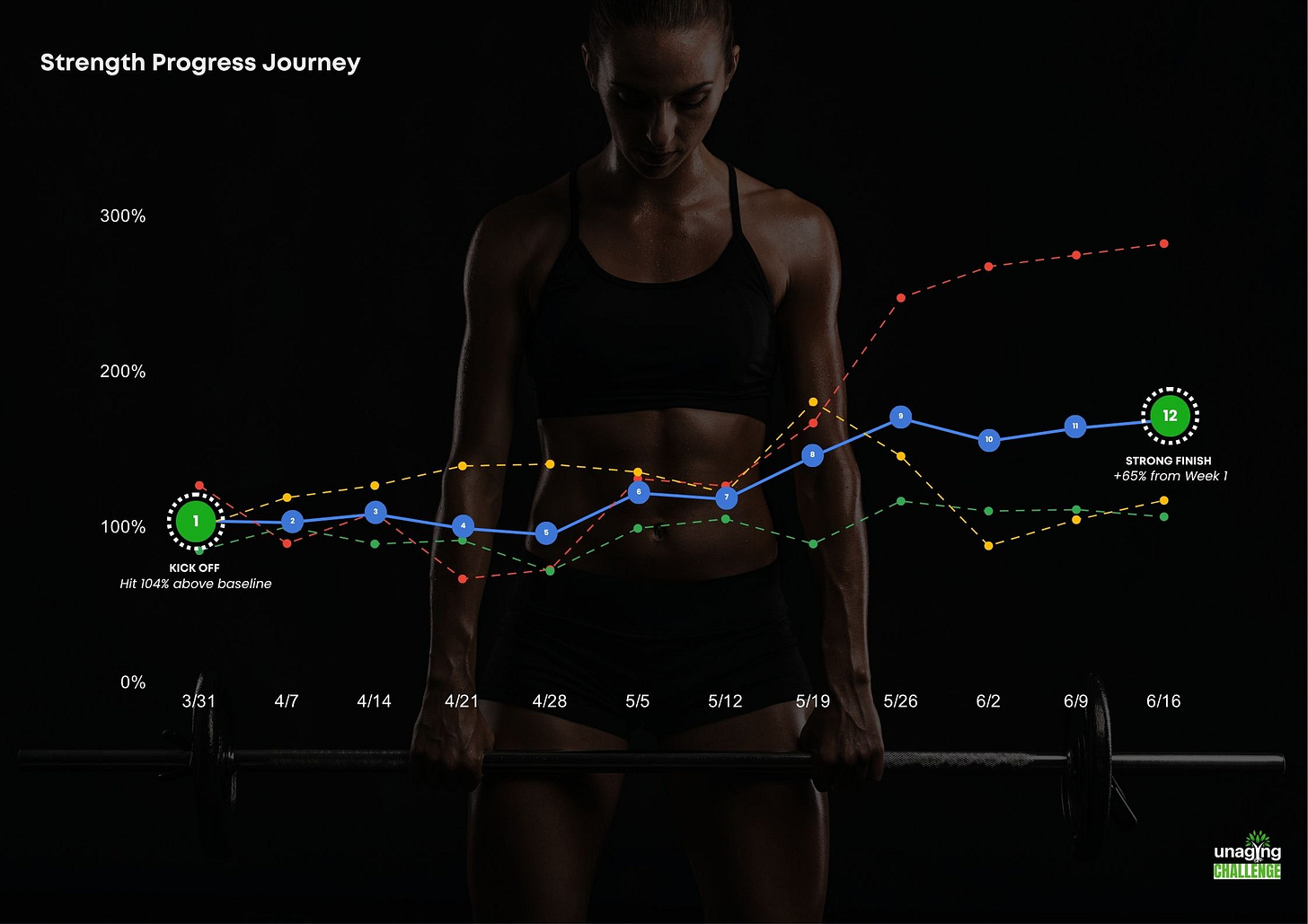Strength Challenge 2025: Final Results
We have now wrapped up the 12-week Strength Challenge 2025 after the successful launch of the Cardio Kickstart Challenge 2025. Of the 30 participants who finished the Cardio Kickstart Challenge, 20 continued into the strength phase and gained noticeable improvements in their strength, cardio capacity, and habits. Let’s see how the Strength Challenge has made a difference.
The Strength Workouts and Challenges
Participants followed a clear progressive structure that gradually increased intensity through compound exercises. They adapted and rotated the rep schemes —12, 10, and 8—while tracking their weekly strength improvements.
Sounds simple. However, in reality, it was challenging. Our participants comprise a diverse group, including first-time lifters, regular gym-goers, and individuals restarting their fitness journey.
Here were some of the challenges:
“I strained my piriformis doing deadlifts one week. “
“I’ve been switching all of my exercises from 5x5 to 3x8. This has been much more difficult than expected, which has led to consecutive failures and backing down weights.”
“My gym is not close; while I had planned to get there frequently for other nearby activities, other obligations often got in the way.”
“I have to admit, the last 5-6 weeks I had been loving the challenge, but being a complete novice for any weight lifting, my body joy has turned to body pain the past 8-days with the progressive overload.”
“I’m pushing through, but now with a big focus on form. Having a home gym is great - but not having the form correction is frustrating.”
How the Strength Challenge Made a Lasting Impact
While there were struggles, they continued and learned through discomfort. That growth mindset reflects in how the challenge ended.
The Strength Challenge 2025 was rated 4.3 out of 5 by the participants. Some factors they liked were:
The well-structured workout plan.
Visible weekly progress tracking.
Flexibility of the progress tracker.
Besides these three aspects, here are some positive experiences from the participants:
Physical Strength & Performance Gains
“All my lifts went up. I feel stronger and more confident overall.”
“I can now squat and stand more easily in daily life.”
“I increased my reps early on and felt stronger each week.”
“Even though I gained weight, I look a little leaner and feel better in general.”
“The challenge got me back into strength training, which I haven’t done in over 15 years.”
Mental Wins & Personal Growth
“Even on low-energy days, the tracking helped me stay consistent.”
“The structure and accountability gave me more direction than my usual workouts.”
“I’d been in a bad place mentally, so I was glad to pick it up again. I’m still going.”
“I liked the flexibility—it made it easier to stick with even when life got busy.”
Balanced Strength Progress
The team started with an above-average baseline of 104% and pushed through a mid-point dip, which led to the highest recorded 1-rep max in Week 9. In the end, they closed the strength challenge with 169%. That’s +65% improvement vs. Week 1.
The challenge targeted the three major muscle groups: legs, chest, and back. Combined with compound exercises, these muscles deliver the most tremendous functional benefits in the least time.
Here’s a closer look at the strength gains by movement type
Legs improved from 81 to 100 (+23.5%)
Push progressed from 66 to 95 (+43.9%)
Pull increased from 58 to 64 (+10.3%)
Why Strength Training Matters
Decades of studies have affirmed the importance of strength training in promoting longevity. Our research indicates that resistance training enhances muscular strength, bone density, insulin sensitivity, and cardiovascular health, all with minimal time commitment required.
Aligned with these principles, the Strength Challenge 2025 adopted a time-efficient and focused approach, utilising progressive overload. Here are some real-life improvements reported throughout the 12-week challenge:
✔️ More strength in daily movement.
✔️Higher energy after workouts.
✔️Better consistency and motivation.
✔️Renewed confidence and commitment to fitness.
Coming Up: The Step Masters Challenge
In the first two phases, we’ve built strength and endurance. In the next phase, the Step Masters Challenge, we will focus on consistent daily movement, measured by daily steps.
Longevity research suggests that combining daily goals with cardio and strength exercises can reduce the risk of premature death by 75%. That’s 9.8 years of expected lifespan!
This next phase will also follow evidence-based research and apply proven methods for health and longevity.
Be the First to Know What’s Next
Interested in joining the Unaging Challenge 2026? Subscribe and get notified when registration opens. Stay informed about our latest research and announcements related to health and longevity.



